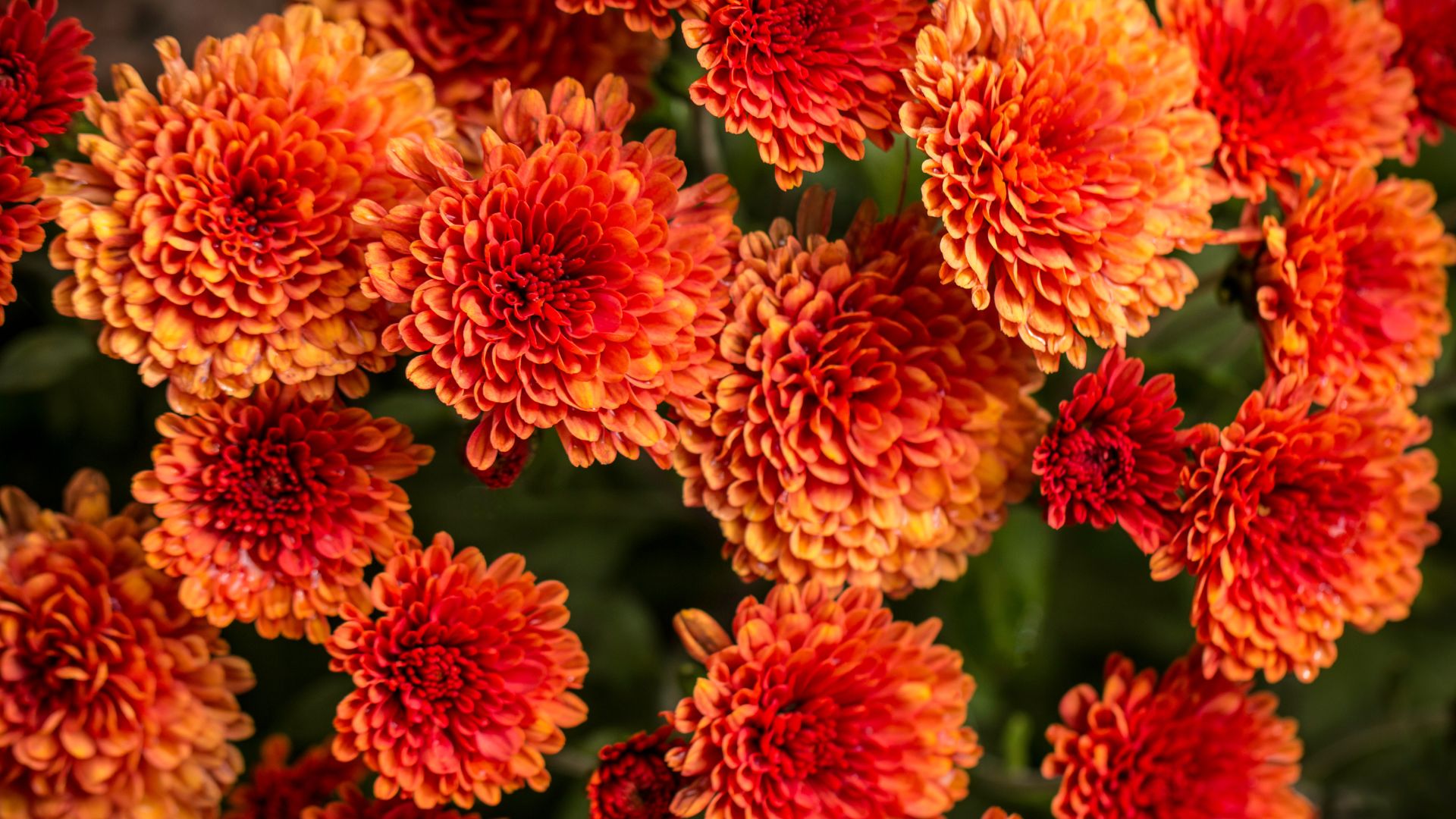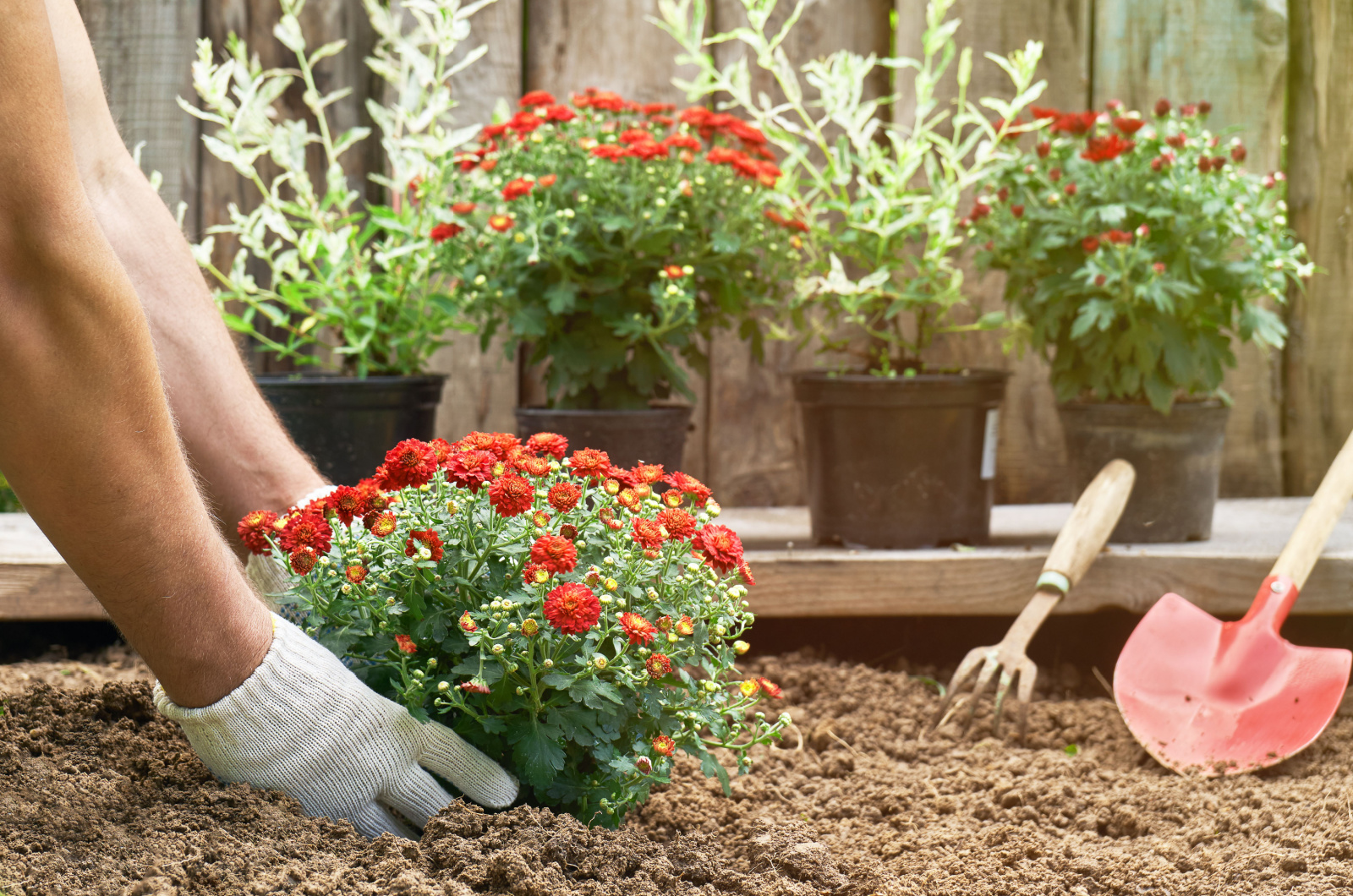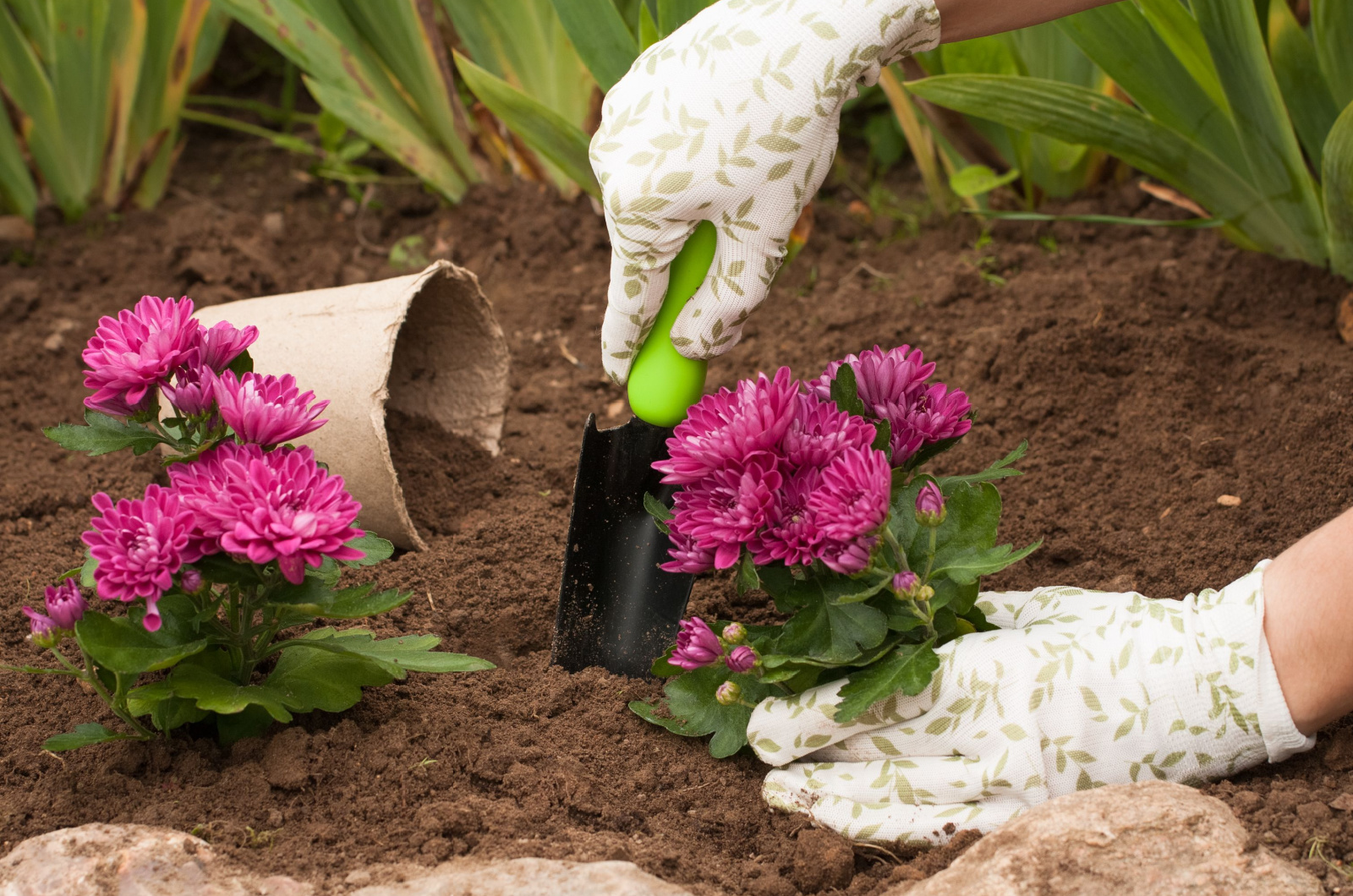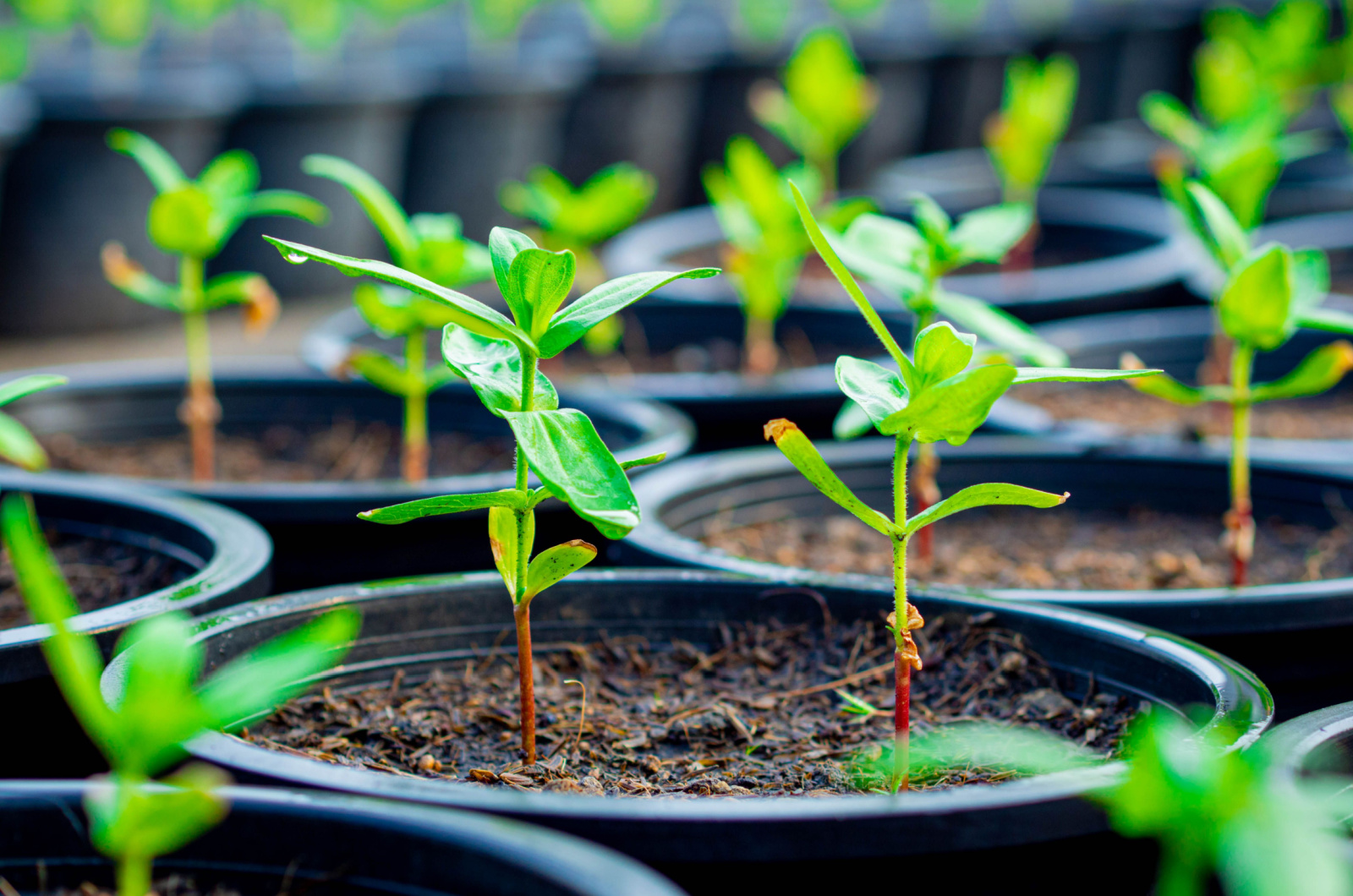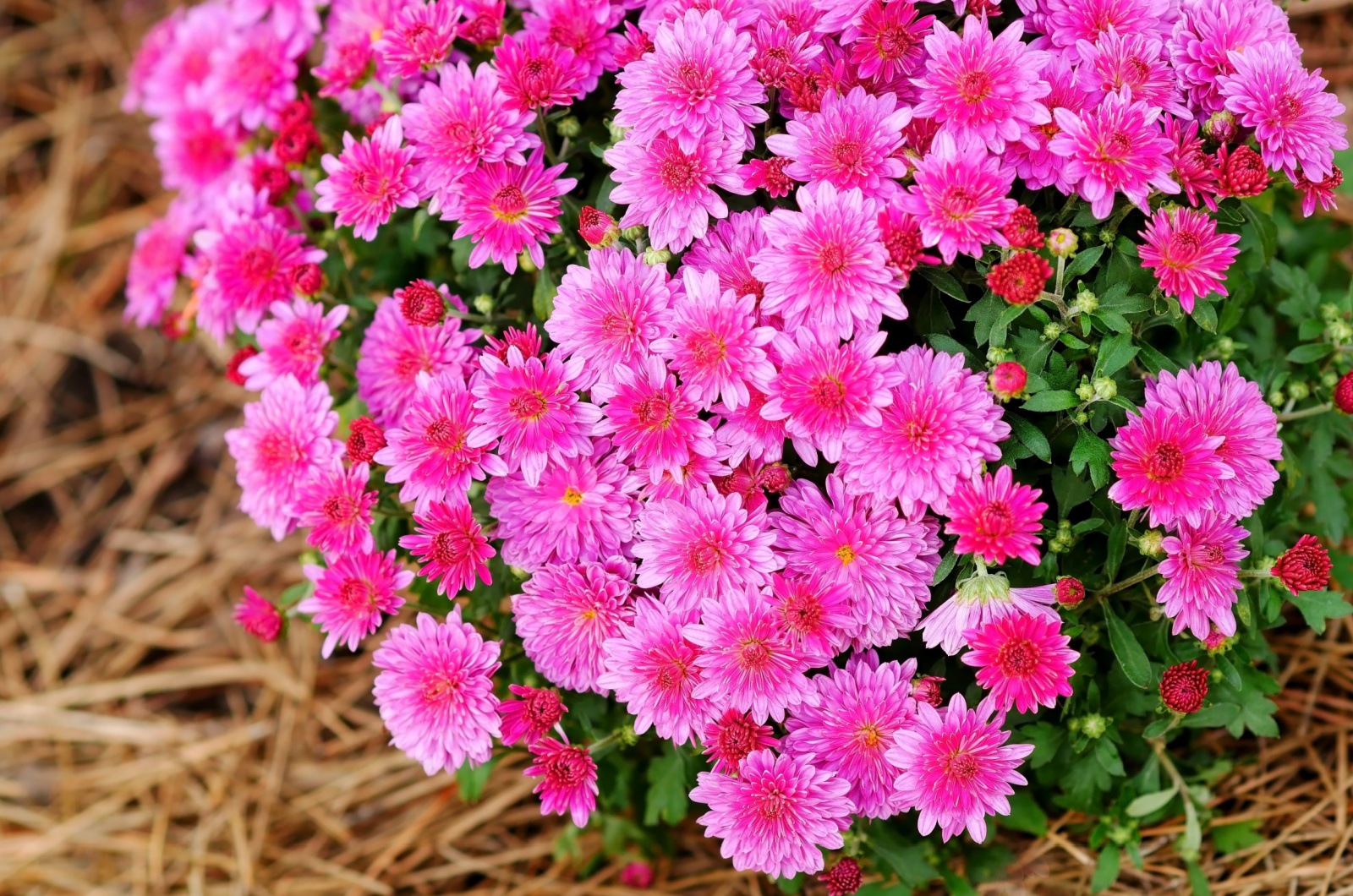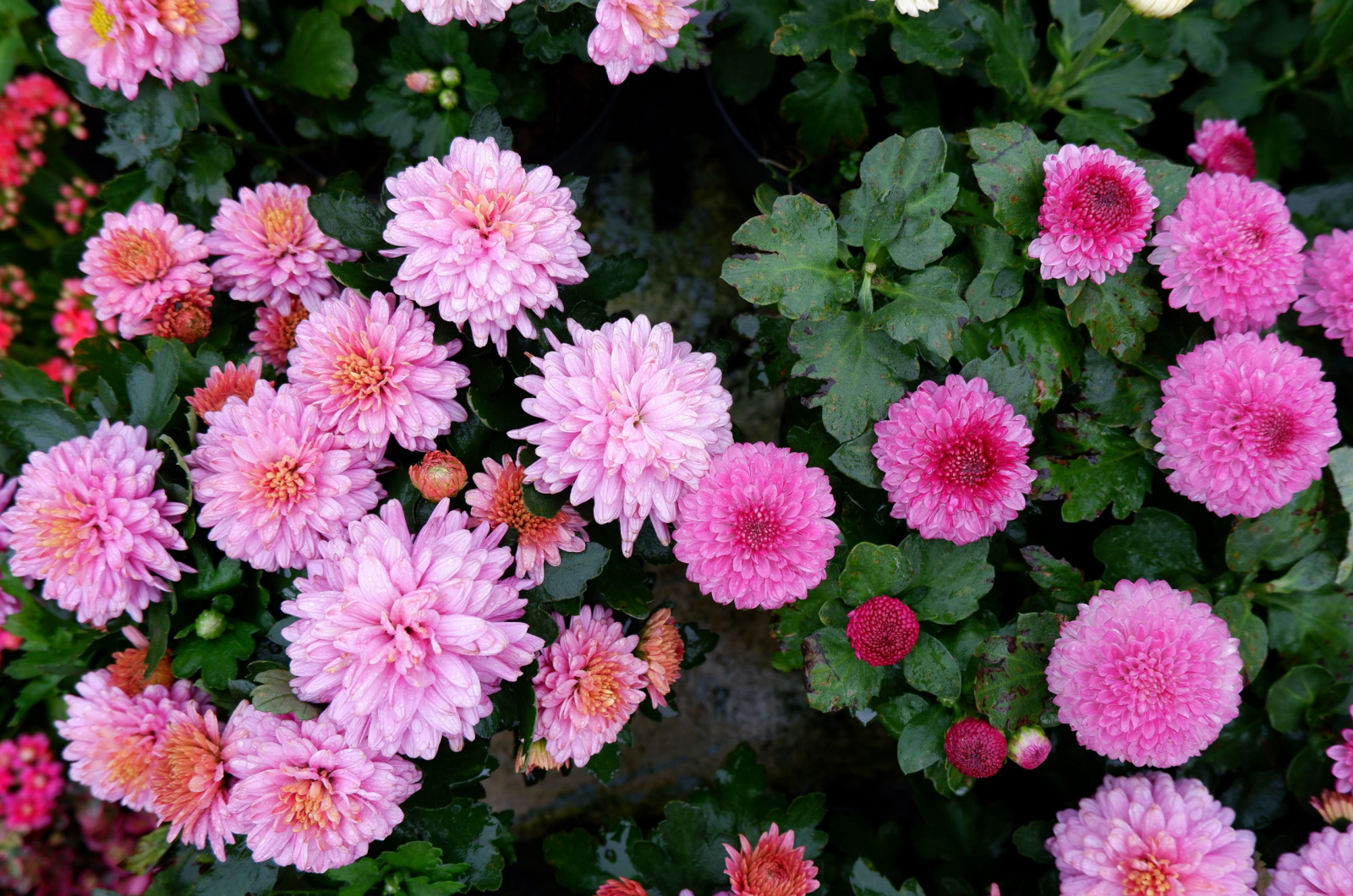No fall is real until you’ve seen chrysanthemums, also known as mums, popping up in your neighbors’ yards. But don’t just stand there. You can plant them yourself and enjoy their sweet and spicy autumnal aroma.
They come in a range of colors, from deep burgundy, purple, orange, and bronze to more gentle pink, white, and yellow.
Mums are the perfect fall flower since they can tolerate cold temperatures, although some are known to open their blossoms in late summer.
Here’s what you need to know about chrysanthemum care!
Chrysanthemum Care Guide
Mums are quite easy to care for and are even on the list of plants that repel lizards, which is another plus for adding them to your garden.
Here’s how to prolong their lifespan and make them more beautiful than ever.
Light Requirements
Most nursery mums grow in greenhouses now because they are picky about their lighting conditions. They are the staple fall flower, but they need full sun in order to produce an abundance of blossoms.
That means keeping them in a location that gets at least six hours of direct light each day.
These plants are also photoperiodic, meaning they respond to the shortening of the day and start blooming only when the day period is less than 12 hours long. These short-day plants will flower earlier or later in the fall, depending on the variety and its genetics. (1)
Water Requirements
These plants need plenty of moisture because they love growing in full sun. Irrigate them everyday or every other day, especially if they start looking droopy.
The worst time to water your plants is in the afternoon and evening, so make sure to irrigate these plants in the early morning (before the sun comes up) or in the evening.
This way, they’ll get plenty of time to soak that moisture up before it evaporates and they won’t be water-logged during the night.
Water these plants deeply when growing them in the ground, making sure it penetrates about 6-8 inches deep.
When growing mums in planters, always water until you notice excess moisture coming out through the drainage holes. When in containers, these plants require about an inch of water per week, so you can irrigate them whenever the top soil feels dry to the touch.
Temperature And Humidity
These plants are cold hardy in zones 5-9, but some varieties, like the ‘Mammoth Daisy’ can tolerate growing conditions and temperatures down to zone 3.
They can grow in a range of temperatures, from 20-90°F (or even 95°F), although they prefer conditions between 62-72°F.
Humidity
Mums thrive when the environment around them is quite humid and prefer it to be somewhere between 70-90%. This is quite easy to maintain in greenhouses, but not in your own home.
When growing chrysanthemums indoors, aim for around 40-50% humidity, which will be enough to keep them satisfied.
Extremely low air moisture levels will affect their growth, bushiness, and overall flower production, so don’t go any lower than 40%.
Soil And Fertilizer
Chrysanthemums can thrive in a range of soils as long as they’re well-draining. You can plant them in clay, loamy, or sandy substrates if you plan on growing them in the ground.
If you want potted mums, make a mixture of equal parts high quality potting medium, coco coir, and horticultural grit, pumice, or some other material to improve drainage.
And when it comes to pH values, aim for a neutral or slightly acidic soil.
Fertilizer
If you want as many blossoms as possible, you should fertilize your mums from time to time.
When growing them in pots, start feeding them at least a month after planting or even longer. Potting mixes usually contain added plant food and have enough nutrients to last these flowers for a certain amount of time.
After a month or so, fertilize the mums with a liquid-fertilizer diluted to at least half-strength (or more if it says so in the instructions) and feed them once a month. Finally, stop fertilizing them once they open their flower buds.
If you use slow-release fertilizers, apply them every 6-8 weeks.
Furthermore, if you grow your mums in the ground, you might not need to fertilize them if your soil is fertile and you’ve amended it with compost. You may add some more compost or aged manure a couple of weeks before your mums flower.
Pruning
Pruning is another important part of the mum care routine if you want round shrubs with plenty of flowers.
The first chop you should do is in late May or once the plants get about 6 inches tall. Trim them down to about 2-3 inches to promote the development of side shoots.
You can repeat this practice until mid-July, but that’s the latest you should stop because at that point your plant will start producing flower buds.
Once the plant finishes its flowering cycle and the blossoms begin to fade, it is time to trim it drastically. As soon as the foliage turns yellow, prune the plant almost all the way back to the ground, leaving about 2-3 inches of growth.
Note: You don’t have to prune your mums after they finish flowering. You can let them die back and do the trimming in early spring.
And if you need more info, here’s a quick mum pruning video that can help you out:
Growing Chrysanthemums In Pots
According to NASA, mums are one of the 18 air-filtering plants, and you certainly can grow them in containers and keep them indoors to reap their benefits.
Most pot grown mums are usually florist mums, and they’re the ones that you should grow indoors. They aren’t as hardy as garden mums and cannot survive harsh winter conditions.
For instance, florist mums are cold hardy in USDA zones 7-9, while gardening mums can withstand winters in zones 5-9.
So, if you want to grow mums in containers outside, go for a garden variety. You can simply transplant them into larger pots with drainage holes and enjoy their colors.
But know that chrysanthemums are flowers that love sunshine, so you should expose both indoor and outdoor plants to it as much as possible. Indoor, florist mums thrive in indirect sunlight, while the outdoor ones require direct light.
And don’t forget to water the potted mums frequently. They are thirsty plants and will quickly show you if they’re unhappy about their watering routine.
Propagation
There are numerous methods of plant propagation, but when it comes to mums, we’ll stick to the most common ones: using cuttings, seeds, and division.
The best time is springtime because they’ll have enough time to grow and produce flowers before winter.
Of course, most people just buy young nursery plants and transplant them after their last frost, but you can grow your own mums, and here’s how!
Propagation By Cuttings
Step 1. Take a four-inch-long cutting chopped at a 45-degree angle.
Step 2. Remove the bottom leaves (about an inch or so) to make planting easier and prevent any possible rotting and soil contamination.
Step 3. Dip the bottom end in rooting hormone and plant the cutting in a seed-starting mix. You can make your own by mixing pumice and compost.
Step 4. Keep the cuttings moist at all times and expose them to indirect sunlight, and they should develop roots in a couple of weeks. Once they overgrow the nursery pot or tray, you can transplant them into a larger one or outside.
Note: Remember to move your mums outside only when all danger of the last spring frost is long gone.
Propagation By Division
One of the best ways to multiply your chrysanthemums is by simply dividing mature plants.
Step 1. Remove the mum from the planter or dig it up from the ground.
Step 2. Take your shovel and cut the roots so that you end up with a few mum clusters.
* Make sure that each cluster has its own root system so that they can grow and develop properly.
Step 3. Replant the divided mums into new containers or put them in the ground.
Step 4. Water the plants thoroughly and mulch them if you want to. This can help suppress weeds and keep the soil moist for longer, allowing your plants to deal with the shock better.
Here are some more quick tips for dividing mums:
Growing Mums From Seed
This technique isn’t as common as the previous two, but it allows you to witness everything that your plant is going through from start to finish.
Step 1. Plant the mum seeds in a nursery tray filled with high quality seed starting mix about 6-10 weeks before the last expected spring frost.
Step 2. Keep the soil moist (but not wet) at all times and make sure the temperature is around 70-75°F. You can cover the tray with a humidity dome or a plastic bag to maintain proper humidity and aid germination.
Step 3. In about 10-21 days, the mum seeds should sprout. Move them to a position with indirect light at this point to help them grow and develop properly.
Step 4. Move the seedlings to larger containers once they overgrow the trays.
Step 5. Harden the young plants off before moving them outside to help them deal with transplant shock.
Overwintering
It is important to know how to protect your plants from spring and fall frost to keep them safe and have them come back year after year.
Chrysanthemums are cold hardy flowers, but they still require some degree of protection.
The best thing you can do for them is spread mulch, such as straw, around the base of the plant to insulate the ground and keep the roots a bit warmer during winter.
And if you keep your mums in planters, you can bury the whole thing in the ground and cover it with mulch, or bring them indoors to prevent them from freezing.
Common Issues
Mums are fairly healthy plants, but they can get affected by pests, diseases, and all sorts of plant conditions if you don’t care for them properly.
Pests
• Chrysanthemum aphids: They suck the sap of the plant and can even kill it if not dealt with in time. You can spray them off forcefully with water, remove them by hand, introduce their natural predators (ladybugs), use horticultural oils, or pesticides.
• Foliar nematodes: They overwinter in the soil and infested plant material, working their way up when spring rains come. They turn foliage yellow and brown and can kill the plant if not dealt with on time.
The only way to fight them is to remove infected plants and the surrounding soil. Use insecticidal soap on surrounding plants to kill any foliar nematodes that may have survived.
• Leaf miners: They nibble on plants’ leaves and can lead to droopiness. Remove the infested foliage or use systemic insecticides for harsher infestations.
• Spider mites: These pests also suck the sap out of the plant and can kill it if you don’t remove them in time. Destroy the severely infested parts. For smaller and early infestations, you can forcefully spray them with water or use insecticidal soaps.
Diseases
• Leaf spots: Starting off as yellow, leaf spots slowly turn darker and darker until they become black. They start on the bottom foliage first and can cause withering. Remove the infected leaves and regularly get rid of dead plant material to remove any spores that cause this disease.
• Powdery mildew: This disease is characterized by whitish powder on top of leaves. Use foliar fungicides or simply remove the infected parts. (2)
Leginess
Elongated and droopy stems are usually caused by lack of sunlight. The stems grow towards the light source and become too heavy for the weak plant to support it.
You can easily solve this problem by moving your mums to a location where they get at least 6 hours of sunlight each day (direct light for outdoor and indirect light for indoor plants).
Unfortunately, leggy stems won’t grow back to normal, so you will have to cut them off to maintain a neat and tidy plant appearance.
Woody Stems
Lack of moisture will cause stunted growth and woody stems, so make sure you always keep your mums moisturized.
Just don’t overdo it because overwatering will lead to yellowing, leaf drop, and root rot.
Leaf Discoloration
Discolored leaves can mean a lot of things. Your plant can be underwatered and exposed to too much sunlight, and that’s when it develops brown and brittle leaf tips and margins.
If you overwater your plant, it will turn yellow and its leaves will become soft and soggy.
Poor soils and lack of nutrients can cause various discoloration. Lack of nitrogen is characterized by smaller, pale green foliage and stunted growth, while lack of phosphorus results in yellow upper leaves and necrosis.
Types Of Mums
The genus Chrysanthemum includes about 40 different species. These are one of the most oxygen-producing green buddies out there. Here are some of the most popular ones:
• Anemone chrysanthemum: raised cushion in the middle
• Intermediate incurve chrysanthemum: loosely curled petals in an upward direction, but less tight than the regular incurve chrysanthemum
• Irregular incurve chrysanthemum: florets curled upwards towards the center of the blossom, while the lower petals are scattered in an irregular pattern
• Pompon chrysanthemum: globular petals curl and completely cover the middle of the bloom
• Quill chrysanthemum: characterized by their long tubular petals
• Reflex chrysanthemum: florets curl in a downward motion revealing a flat middle of the flower
• Regular incurve chrysanthemum: the petals curl in an upward direction, forming a sphere or a ball
• Spider chrysanthemum: this species is characterized by long petals that look like spider legs
When Do Chrysanthemums Bloom?
These plants have a long blooming season and typically flower from late July through October.
Mums are photoperiodic, so they will bloom more profusely when the day length shortens.
Are They Pet-Friendly?
According to the ASPCA, mums are toxic to dogs, cats, and horses because they contain irritants such as lactones, pyrethrins, sesquiterpene, etc.
These can cause vomiting, diarrhea, excess drooling, lack of balance, and some skin irritations.
Are Mums Annual Or Perennial?
Mums are great perennials for fall, but you have to care for them properly and choose the right variety.
Garden mums are cold hardy and can be perennials in zones 5-9, but you have to protect them a bit during winter to have them come back year after year.
References:
1. Mums (2017). UIUC Extension: The Garden Scoop.
2. Kluepfel, M., McLeod Scott, J., Blake, J. H., & Gorsuch, C. S. (2021). Chrysanthemum Diseases and Insect Pests. HGIC Clemson Cooperative Extension.

